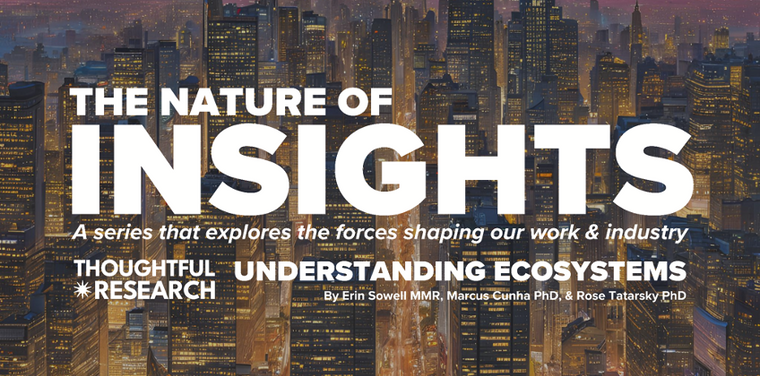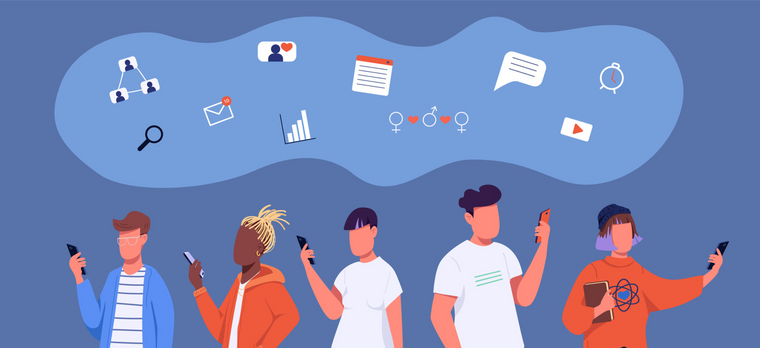On the road with GenZ
“It’s now time for ‘Boomer versus Millennial!’, your favourite generational trivia game!”

“It’s now time for ‘Boomer versus Millennial!’, your favourite generational trivia game!”
It was June 8, and we were watching the Round Rock Express host the El Paso Chihuahuas at Dell Diamond in Round Rock, Texas. Although we were getting the side eye from the local fans for wearing all our Chihuahuas gear, it was a perfect Texas evening, with tacos for dinner and a cotton candy sunset.
And then there was this curious generational trivia game.
At first, we chuckled and moved on, focusing on El Paso’s lineup. We were the generational odd men out, being neither Boomers nor Millennials. As a GenX father and a GenZ son driving across America, a between-innings “Boomer versus Millennial” trivia contest was hardly the strangest in-game promotion we would see. But it got us thinking.
Driving for 17 days together, through 21 states, across 6,462 miles, and 14 baseball games gave us plenty of time to talk, but we never had one of those strange generational representative-to-generational representative discussions that I recall watching on 1970s and 1980s laugh-tracked sitcoms. Do real people actually preface any normal discussion by first referencing their generation?
However, we did observe and discuss some distinctive traits of GenZ, as experienced during our time together. Full disclosure. Neither of us is big on over-hyped generational generalizations. First, there are the “kids these days” complaints that are levelled at every rising generation. These are usually just observations that could apply to any group of young people across time. And, they’re more likely to reflect the envy of an ageing observer than the accuracy of anthropological analysis. And then there are just the absurd over-generalizations. I remember reading that my generation, GenX, were slackers. That seemed like a strange generalization at the time, but I’ll let historians debate that claim. We aren’t interested in generational analysis as put down.
The other thing we decided to avoid is the toxicity of pitting one generation against another. There was something strange about the Boomer versus Millennial trivia contest. Of course, it was meant to be funny and lighthearted, and the folks at the stadium who cooked this promotion up meant well. But, the framing of it got us talking about the strange us versus them framing of some generational discussions. That isn’t helpful, and it only reflects differences rather than the support that each generation gives to the other.
Over the course of our road trip, we observed and discussed these 9 GenZ distinctives:
Constant connection
The primacy of the group chat
GenZ humor
Meme culture
Digital natives: About maps
On-demand everything
UTube, the online tutor
TikTok and the infinite scroll
Instagram celebrity
This isn’t an exhaustive list of GenZ traits. Pew Research Center, market researchers, marketers and political pollsters have identified a number of others. But these are the distinctives we observed together in the Jeep, in ballparks, and while exploring America.
Constant connection
Even as we drove across the country, Asa was in constant communication with friends and family through group chats, direct text, and messaging on social media platforms. Social media connectivity among GenZ is largely driven by the direct messaging (DM) features on Instagram, Twitter, and Snapchat, with Instagram direct messaging being the most popular based on ease of use. While I was generally unplugged and enjoying thinking time on the open road, my son was continuing the discussion across his communities. And our differing reactions to mobile phone dead zones and spotty wifi were predictable. Communication is one of our specie’s oldest technologies, and we keep expanding it. There is no right answer here. On one hand, it may be that GenZ brains are now wired for this constant conversation. On the other, I have to wonder if GenZ will burn out on it, and take a step back.
The primacy of group chat
This leads to the second great observation, the critical importance of the group chat in GenZ communication. While social media posts are more for general consumption, group chat is the workhorse of GenZ peer communication. And, there is significant internalized pressure to stay active on the chat and connected across all group chats. From laughing at memes to fear of missing out, the group chat plays a large part in the lives of GenZ. There’s certainly FOMO – fear of missing out, but there is also FOLO – fear of being left out of the chat and excluded from the discussion. As GenZ enters the workforce, there will be a tug of war between traditional, formal communication that is often directive in nature and informal, group chat environments. We see this already in the workforce, and yes, the water cooler discussions have always existed. But the group chat is far more continuous than any water cooler sidebar discussions.
GenZ humour
On our road trip, my son shared a wide assortment of funny memes, videos, and tweets. If my generation’s humour was generally characterized by scepticism, nihilism, and an attack on convenient social hypocrisy, GenZ humour tends to focus on the absurd or innately incongruous, often in meme format. This is usually done in a way in which the visuals and the words clash, helping to heighten the absurdity.
Meme culture
And that brings us to memes. Meme culture has become a large part of Millennial and GenZ humour. Propagated across social media platforms like Instagram, Reddit, TikTok, and Twitter, memes have become shared humour and reference points among GenZ. And they have become rallying cries with real-world implications, like the Gamestonk phenomenon or the rise of Dogecoin.
What is a meme? The classic definition is that a meme is a self-replicating, viral, idea. There are many, many types of memes. There are GIF memes, and short video clips that loop with supporting text. There are short audio memes that explode into popularity after they go viral. There are photo memes which are enhanced images with supporting text. And there are video memes, video clips capturing a wide array of “shenanigans”, often short comedy sketches.
Although most people think of visuals when they think of memes, many of the biggest memes have been audio-based. In a way, the 1984 Wendy’s “Where’s the beef?!” commercial was an early audio meme. The reason viral audio memes catch on and expand is that consumers can easily quote them in casual conversation. One of the first big audio memes was the “Wassup” commercial from Budweiser. It was so out of the ordinary, with such a peculiar sound that friends would call each other just to say, “Wasssup?” History repeats itself. In 2015 an Instagram user posted a video of a man saying, “Deez nuts, ha goteem”. This meme inexplicably went viral and became a GenZ Middle School laugh line.
Most of the memes my son shared with me on our trip were visual memes. And, the more he explained them, the more I realized just how complex these truly are. Most visual memes are referencing past memes, building on a kind of iconography. And this is where it gets interesting. In the early 2000s I was a participant in an exercise on the future of communications. At the time, we assumed that video and image would displace text in a kind of post-text / beyond-text literacy. You can argue that this is exactly what happened. Online video content, Instagram images, and even emojis have displaced what used to be text-based communication. But, after analyzing meme culture, an alternative view could be that memes have integrated all of these elements, including text, into a new communications type. This is the thing we most need to learn from GenZ.
Digital natives
Years ago, on a family drive in the old minivan, we noticed our son running his forefinger down the glass window next to his car seat. And, at that moment, he said, “Daddy, can you scroll down the window?” It’s obvious now. A digital native, even as a toddler, would naturally assume that any surface was an interactive display and could be manipulated like a mobile phone or a touch screen.
Fast forward to our road trip, and the operating assumption was that information or service is digitally accessed, with search as the first instinct.
And then there was the curious case of the map. I purchased a road atlas for our trip, thinking that we would use it to track our progress and identify interesting detours along the way. Yes, we had a GPS mounted on the windshield. Yes, we were using the maps feature on our phones as well. But I thought that a backup atlas would be wise. We barely used it. An atlas was an entirely new technology to my son and one that made no sense to him. Why use a static, 2D map when you can use the maps feature on your phone? He quickly learned how to use an atlas, but it made zero sense to him.
This is interesting to me, because in today’s business world, executives basically present 2D maps to each other – static charts and graphs. I suspect that that era will end as GenZ takes the stage.
On-demand everything
“Let’s listen to the radio.” By this, I meant, “Let’s listen to local, terrestrial radio to better understand the people living in this area.” Thus began the revelation of GenZ and on-demand everything.
As it turns out, the idea of just turning on the radio, searching for fun stations and passively listening to whatever they play is insane. It is also insane to switch over to satellite radio, choose one of hundreds of niche genres, and listen to whatever randomness they play. Why do any of this when you can quickly populate your own playlist with the exact songs you want to hear?
Although I wanted a bit more serendipity, I have to admit that my son’s logic was sound.
The playlist killed the radio star.
And so we began the creation of the most epic road trip soundtrack in the history of road trip soundtracks (not including my brother’s 80’s mix tapes).
But, the deeper learning is that GenZ expects entertainment and most other goods and services to be (1) on-demand and (2) actively control the experience. With the creation of streaming services, video games, and social media, entertainment in the 21st century is tailored to the consumer whenever or wherever they want it. And GenZ has grown up in this world. Why watch any kind of regular TV when you can watch Netflix content on demand? Why watch any kind of regular TV when you can watch an almost infinite array of content on YouTube that is algorithmically tailored to your interest?
And then there are video games. As a GenXer I love videogames. I grew up on arcade games, Pong, Atari and Nintendo. And this is where GenX and GenZ certainly see eye to eye. Video games are fantastic. They are tools for learning and great entertainment. And they are active, not passive. Video games are on demand AND an active type of entertainment that can be played wherever and whenever the consumer wants. Like GenX, I grew up on Atari. My son and GenZ grew up on Minecraft, a video game with over 126 million users worldwide. Minecraft is a generally collaborative game, is not gendered, and is not zero-sum. In Minecraft, you can work together to build anything. And I suspect the Minecraft spirit will come to define GenZ.
UTube, the online tutor
Yes, we know it is spelt YouTube. But, to GenZ, YouTube is the world’s largest, free University. It is the “how to” Library of Alexandria. If you’re reading this, you probably think of YouTube as an entertainment platform, and it certainly is. But, it is also how GenZ quickly finds instructional videos and speed learns anything. As an example, my son learned Adobe Photoshop and mastered it in one day based solely on YouTube videos. No formal classes. No classroom. Just YouTube instructional videos. And that is pure GenZ.
Colleges see this and are increasingly leveraging YouTube videos as a learning tool. There are even some YouTubers who specialize in their instruction, basing their channel on one educational topic. One example of this is “Crash Course” History.
The pandemic forced and accelerated remote learning. But, GenZ was already learning skills and concepts on YouTube long before the pandemic. And they are learning it on an OPEN platform. There is no elite guarding or controlling this knowledge transfer. The long-term implications of this are profound.
Businesses spend billions of dollars collectively each year on training. And we all want to hire agile learners. We should think more deeply about how our training efforts can better resemble YouTube crash courses.
TikTok and the infinite scroll
GenZ is addicted to TikTok. With a simple interface and just one click to get to your “for you page” (abbreviated as FYP), GenZ will spend hours on what my son calls “the infinite scroll.” TikTok is a powerful social media marketing tool, especially among GenZ. But that infinite scroll, powered by an algorithm that feeds you more of the content you just consumed, burns through a lot of time. It can burn through so much time that some colleges are now urging students to limit their time on the platform so they can focus more on their studies. That certainly makes sense. It also makes sense for marketers to invest in a TikTok content team.
Insta-celebrity
Most GenZ teenagers have Instagram and follow their classmates and friend groups on Instagram. Many have hundreds of followers on Instagram and begin to develop an online persona, projecting an image in Instagram posts, stories, and reels. And this begins the march toward becoming “Instagram famous”. And, as GenZ will tell you, it’s not that hard to become a vaunted “Instagram Influencer” if you already have hundreds of followers. In fact, many of the trends on TikTok carry over to Instagram, making it a great place for these teenage mini “influencers” to hop on trends and gain popularity at school or within friend groups. Andy Warhol was more right than even he imagined.
All of this may sound narcissistic and silly, and on one level, it is. Like the lyrics in one of my favourite country songs, Long Black Train, “That train is a beauty making everybody stare, but its only destination is the middle of nowhere.” Fame is fleeting. The ancients knew this. But, on another level, the GenZ quest for Insta-famousness is teaching them some of the basics of building and marketing a business. Just ask any successful YouTuber.
So, there you have it. Nine GenZ insights from a road trip across America.
We started this instalment with our observation of the Boomer vs Millennial trivia context in Round Rock, Texas. But, the generations aren’t pitted against each other in a zero-sum death struggle. In fact, there is so much the generations can learn from each other. If I’ve managed to absorb any wisdom at all, it was mostly from my Depression-era grandparents, Bob and Betty McClintock. We visited with them in Dayton, Ohio, on our road trip. Asa enjoyed hearing my grandfather, Papa, call me “kid.” It turns out that Papa followed our “Highways & Homers” road trip progress on Instagram, commenting along the way. Just think about that.
Driving across America in a June heatwave, debating the merits of terrestrial radio, atlases, memes, YouTube speed learning, TikTok and Insta-famousness, we learned about each other and I learned a little about GenZ from a patient instructor.


